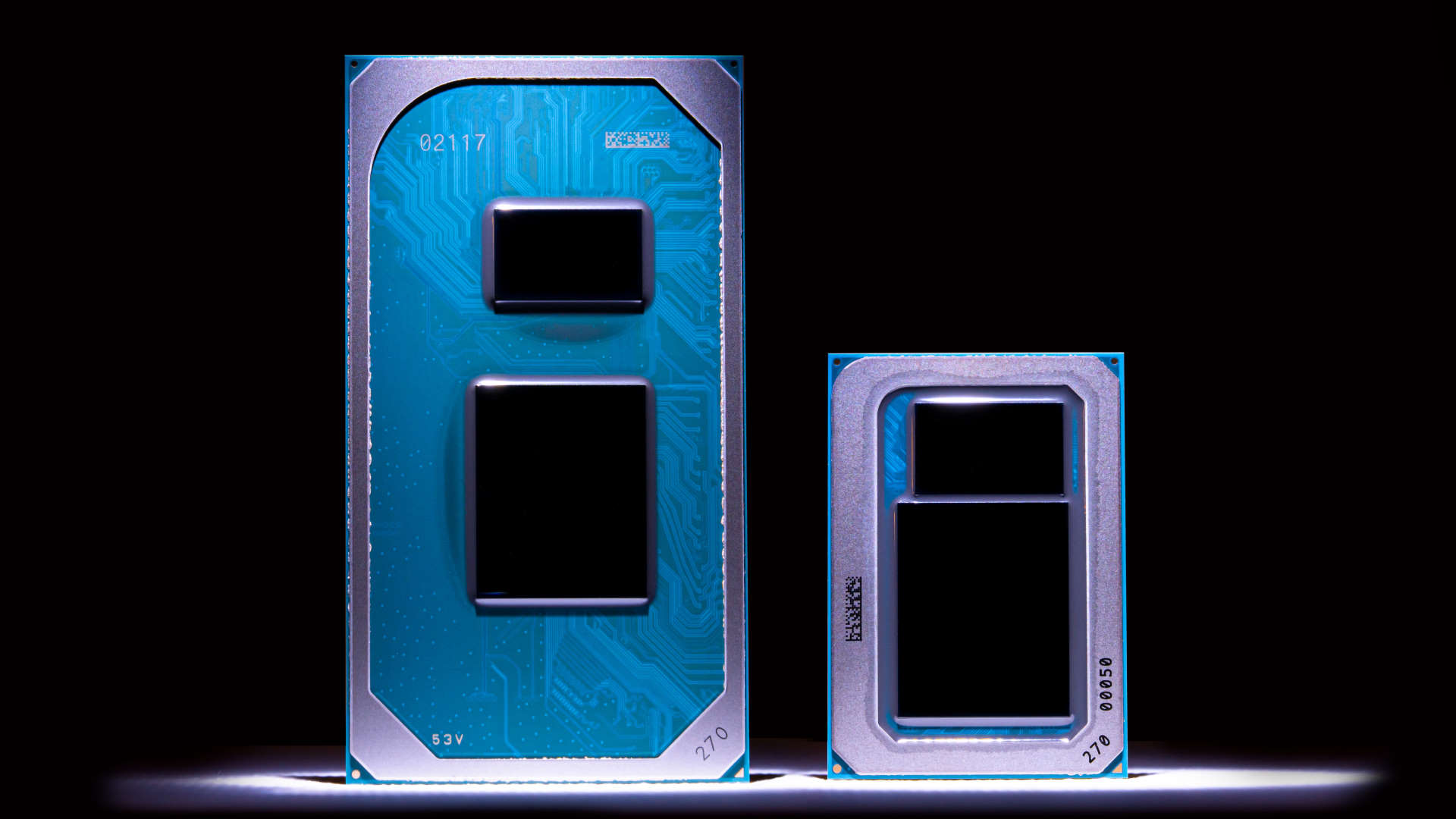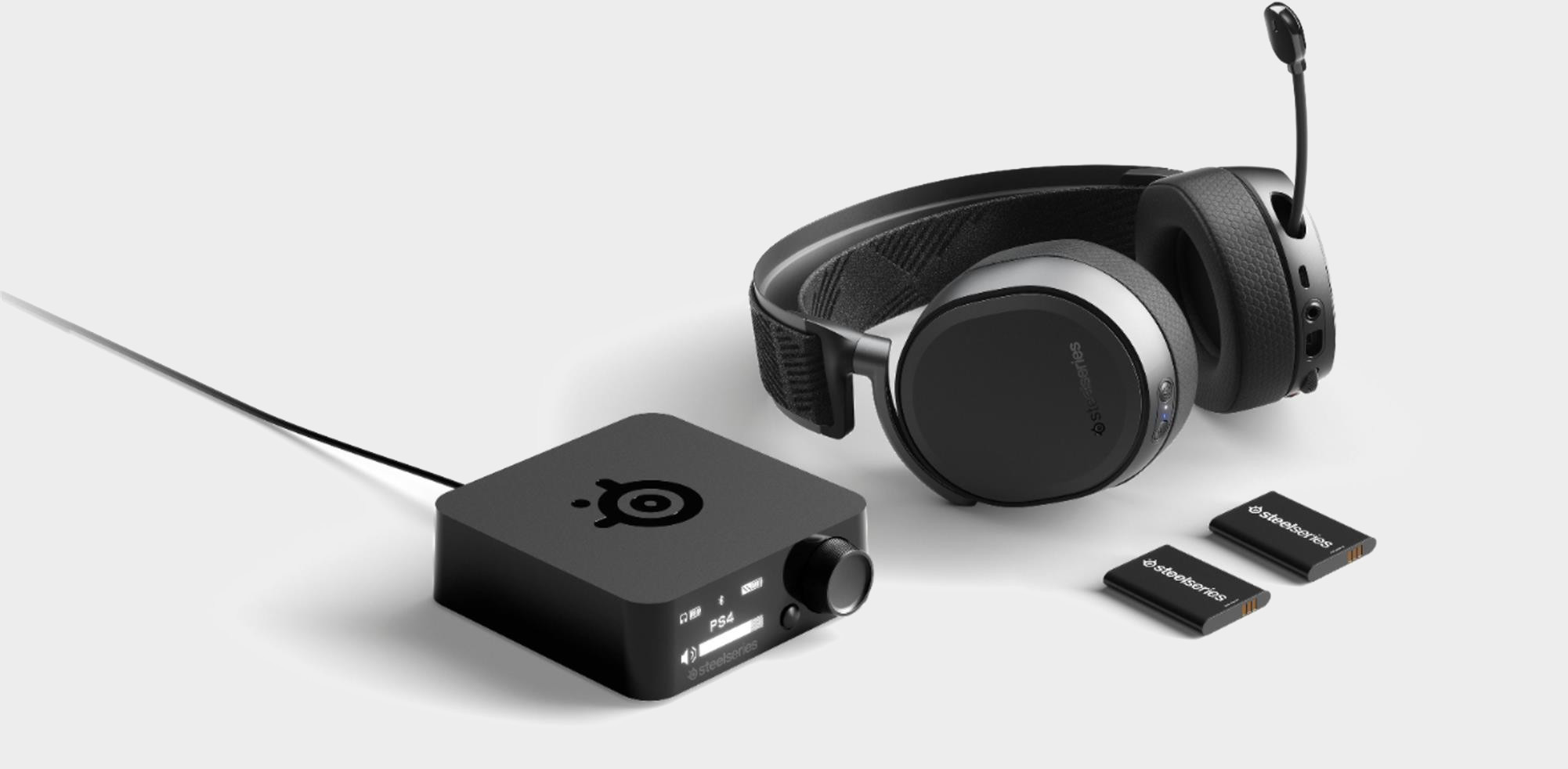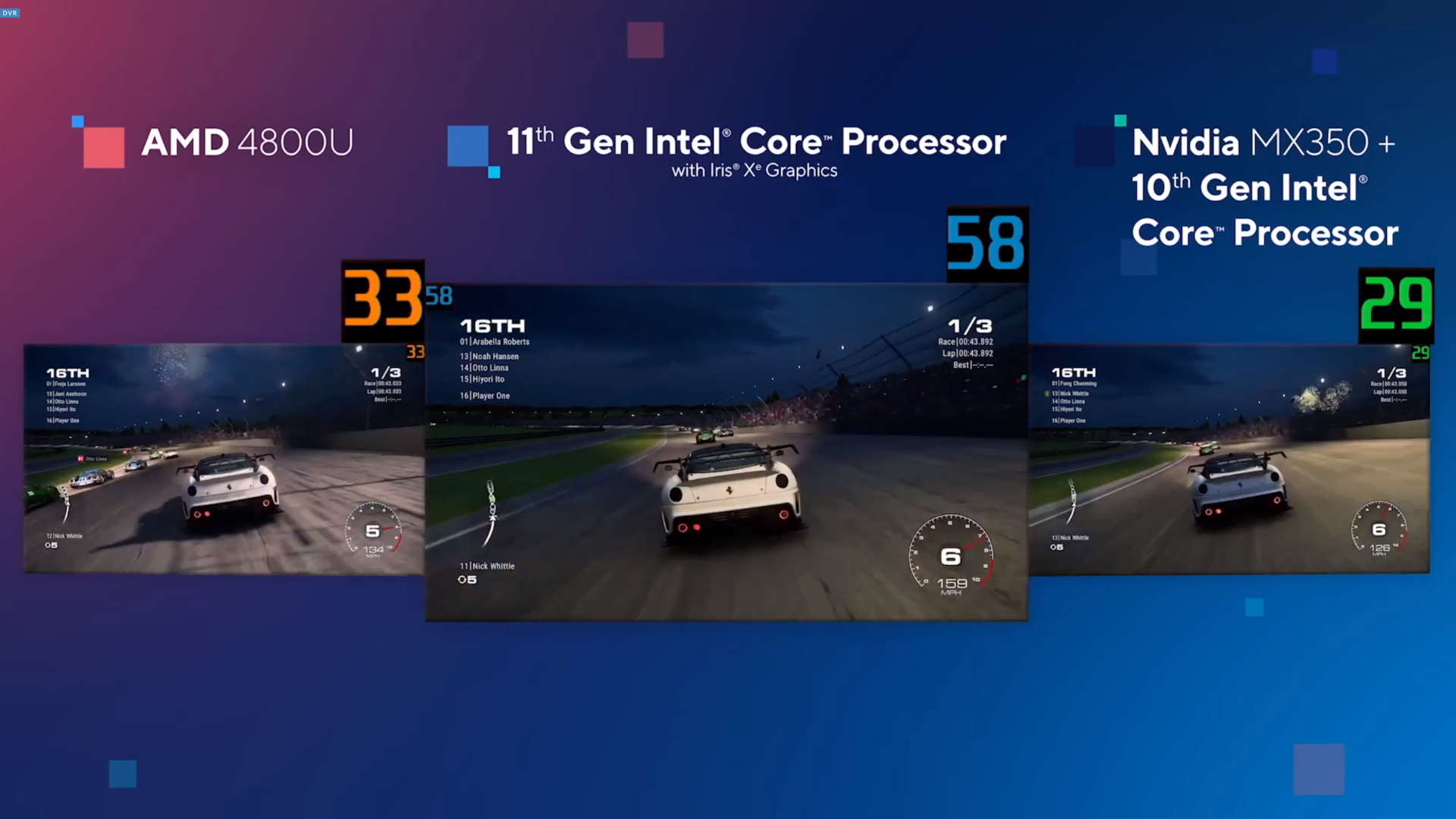Intel's new mobile chips tease gaming frame rates well ahead of AMD Ryzen's finest
Hitting 60 fps at 1080p is impressive, but only certain games will nail it.

Intel has just launched its new 11th Gen Tiger Lake laptop chips with up to twice the gaming performance compared with the previous generation of ultramobile machines. And that means higher frame rates than equivalent AMD and Nvidia-powered notebooks. Thanks to the power of the new Intel Xe GPU being baked into Tiger Lake processors, you're potentially going to get genuine 1080p gaming performance in seriously skinny machines.

Best wireless gaming mouse: ideal cable-free rodents
Best wireless gaming keyboard: no wires, no worries
Best wireless gaming headset: top untethered audio
Calling Tiger Lake the "world's best processor," Intel claims that it "certainly rises above all the imitators." Mmm, spicy. Given the fact that this 11th gen CPU is the first to launch with the new 10nm SuperFin process tech, the new Willow Cove CPU core, and the new Intel Xe GPU silicon, it's got a chance for sure.
In-game testing between an AMD Ryzen 7 4800U device, an 11th Gen Iris Xe-powered laptop, and a machine running an Nvidia MX350, the Tiger Lake machine clearly comes out top. With the Intel machine in the middle almost hitting 60 fps at 1080p, running both Gears Tactics and GRID, it's getting on for sometimes twice the playable frame rates of either the Nvidia discrete graphics card or the GPU inside the latest AMD APU.
Hitting playable frame rates at 1080p with an integrated graphics chip is impressive, though there are a few caveats to these bold performance claims. Gears Tactics has itself been optimised specifically for the Intel Xe GPU and it's likely that GRID also has a little bit of Intel special sauce in there to help performance. Previous Codemasters games, such as GRID 2, have had certain optimisations for new Intel GPU tech in the past.
But some of that special sauce is still impressive. Gears Tactics uses Variable Rate Shading to help boost performance, something that both Nvidia and AMD are touting as a game-changing feature, but still has to run at Medium settings to hit that magic 60 fps mark.


This gaming performance may not be entirely representative of the experience you're going to get in every game, but we've seen Intel Xe machines toting the likes of Destiny 2 and Battlefield V too. Intel is also talking about hitting playable 1080p frame rates in Borderlands 3, Far Cry New Dawn, and Hitman 2 on its integrated graphics silicon.
The real-world gaming performance of these new 11th Gen machines is going to be fascinating, and we're definitely going to be putting the first Tiger Lake laptops we see through a host of benchmarks the minute we get our hands on them. Because hey, that's what we do.
Keep up to date with the most important stories and the best deals, as picked by the PC Gamer team.
| Row 0 - Cell 0 | Cores | Threads | Graphics | EUs | Cache | CPU frequency (Base | Single | All-core) | GPU frequency | Memory | cTDP |
| Core i7 1185G7 | 4 | 8 | Iris Xe | 96 | 12MB | 3GHz | 4.8GHz | 4.3GHz | 1.35GHz | DDR4-3200 | LPDDR4x-4266 | 12 - 28W |
| Core i7 1165G7 | 4 | 8 | Iris Xe | 96 | 12MB | 2.8GHz | 4.7GHz | 4.1GHz | 1.3GHz | DDR4-3200 | LPDDR4x-4266 | 12 - 28W |
| Core i5 1135G7 | 4 | 8 | Iris Xe | 80 | 8MB | 2.4GHz | 4.2GHz 3.8GHz | 1.3GHz | DDR4-3200 | LPDDR4x-4266 | 12 - 28W |
| Core i3 1125G4 | 4 | 8 | Intel UHD Graphics | 48 | 8MB | 2GHz | 3.7GHz | 3.3GHz | 1.25GHz | DDR4-3200 | LPDDR4x-3733 | 12 - 28W |
| Core i3 1115G4 | 2 | 4 | Intel UHD Graphics | 48 | 6MB | 3GHz | 4.1GHz | 4.1GHz | 1.25GHz | DDR4-3200 | LPDDR4x-3733 | 12 - 28W |
| Row 6 - Cell 0 | Row 6 - Cell 1 | Row 6 - Cell 2 | Row 6 - Cell 3 | Row 6 - Cell 4 | Row 6 - Cell 5 | Row 6 - Cell 6 | Row 6 - Cell 7 | Row 6 - Cell 8 |
| Core i7 1160G7 | 4 | 8 | Iris Xe | 96 | 12MB | 1.2GHz | 4.4GHz | 3.6GHz | 1.1GHz | LPDDR4x-4266 | 7 -15W |
| Core i5 1130G7 | 4 | 8 | Iris Xe | 80 | 8MB | 1.1GHz | 4.0GHz | 3.4GHz | 1.1GHz | LPDDR4x-4266 | 7 -15W |
| Core i3 1120G4 | 4 | 8 | Intel UHD Graphics | 48 | 8MB | 1.1GHz | 3.5GHz | 3.0GHz | 1.1GHz | LPDDR4x-4266 | 7 -15W |
| Core i3 1110G4 | 2 | 4 | Intel UHD Graphics | 48 | 6MB | 1.8GHz | 3.9GHz | 3.9GHz | 1.1GHz | LPDDR4x-4266 | 7 -15W |
With 11th Gen cores running up to 4.8GHz, and the Iris Xe GPUs hitting 1.35GHz—and already benchmarked at up to 1.65GHz—this next generation mobile chip is looking rather tasty. Paired with a new Intel logo, and a new Evo brand, Tiger Lake could actually make for ultrabook machines that gamers can actually use.
And, more importantly, that gamers want to use.
The sort of thin-and-light form factors on offer with Tiger Lake are a world away from the bulky gaming laptops we've been used to. A Razer Blade Stealth or a Dell XPS 13 with genuine gaming performance would absolutely turn my head. I don't need 120 fps on the go, but frame rates that don't make me want to claw my eyes out when I'm away from a socket for more than five minutes would be great.
There are reportedly 150 different 11th Gen Tiger Lake designs on the way, from the likes of Razer, Asus, Dell, MSI, and others, and nine different chips from dual-core i3 up to i7 chips with four cores and eight threads. And they've all got mildly confusing names. So don't you worry, it'll still be tricky trying to figure out just what the CPU in that new laptop you've got your eye on is actually capable of.
Just check out the table above and that'll help. Maybe.
Essentially, you're going to want to keep an eye out for either the Core i7 1185G7 or 1165G7. Those are the quad-core, eight-thread 11th Gen chips with the full-fat, 96 EU Iris Xe GPU running at 1.35GHz. They also suck up to 28W of power, so you will still have to trade off some battery life for frame rates in the end.

Dave has been gaming since the days of Zaxxon and Lady Bug on the Colecovision, and code books for the Commodore Vic 20 (Death Race 2000!). He built his first gaming PC at the tender age of 16, and finally finished bug-fixing the Cyrix-based system around a year later. When he dropped it out of the window. He first started writing for Official PlayStation Magazine and Xbox World many decades ago, then moved onto PC Format full-time, then PC Gamer, TechRadar, and T3 among others. Now he's back, writing about the nightmarish graphics card market, CPUs with more cores than sense, gaming laptops hotter than the sun, and SSDs more capacious than a Cybertruck.

